Publications
Comparing Nanomechanical Properties and Membrane Roughness Along the Aging of Human Erythrocytes
A recent study published in the journal Methods and Protocols (MDPI, 2025) provides a detailed analysis of the nanomechanical and morphological changes in human red blood cells during the process of in vitro aging. A progressive increase in cellular stiffness and a reduction in membrane roughness over time were observed.
These changes, associated with cytoskeletal reorganizations and loss of cell surface area, could have significant implications for transfusion medicine and the diagnosis of hematological and degenerative diseases. The study also provides a standardized protocol for the quantitative analysis of cellular mechanical and morphological properties at the nanoscale using atomic force microscopy (AFM).
Hole Transfer Dynamics in Thin Films of Mixed-Dimensional Quasi-2D Perovskites - New Article
This article, published in Advanced Functional Materials, is the result of a collaboration between CNR-ISM and the University of Tor Vergata within the ELDORADO (Effective Light management in 2D perOvskite absorbeRs for A disruptive tanDem phOtovoltaic technology) project. The study explores charge transfer in active materials fabricated with a controlled mixture of quasi-2D perovskites, crucial for next-gen solar cells.
The Burgeoning Importance of Nanomotion Sensors in Microbiology and Biology
In recent years, nanomotion sensors have emerged as a key technology for studying biological activity at the micro and nanoscale. These devices, thanks to advanced nanotechnology and microelectronics techniques, enable the real-time detection of intrinsic vibrations of living organisms—without the need for labels—directly linked to their metabolic activity.
Luminescent solar concentrators based on environmentally friendly tripodal D-(π-A)₃ triarylamine luminophores
Published in the Journal of Materials Chemistry C, a study presents the development of eco-friendly molecular luminophores based on a triphenylamine core for use in luminescent solar concentrators. These devices, which are ideal for photovoltaic integration in architectural applications, combine high visible transparency (AVT ~90%) with excellent optical performance, achieving internal photon efficiencies of up to 50% and external efficiencies exceeding 5%. The materials are synthesized through a multi-step process at room temperature, using green solvents and low-impact methodologies.
Understanding the Interplay Between Thermal Activation, Diffusion, and Phase Segregation of Molecular Dopants Blended with Polymeric Semiconductors
Molecular doping of polymeric semiconductors tunes charge transport and injection in printed electronics. N-type doping is harder due to energy level constraints, needing thermally activated precursors, like N-DMBI-H, to avoid oxygen-sensitive dopants. Activation not only induces doping but also causes diffusion and phase segregation of dopant and by-products, affecting morphology and transport. Comparing DMBI-H derivatives in P(NDI2OD-T2) blends reveals phase segregation as key to performance, and dopant design can mitigate it by enhancing molecular interactions.
This work was published on Advanced Electronic Materials.
Beneath the Surface: Investigating Perovskite SolarCells Under Water
PV devices, beyond conventional rooftops, are finding emerging uses underwater, an unexplored environment. Below 50 meters, only blue-green light (400–600 nm) penetrates. Perovskite solar cells, known for their high efficiency and tunable bandgaps, show strong potential in this setting. Simulations and underwater testing of wide-bandgap FAPbBr₃ perovskite, demonstrated enhanced performance at shallow depths, supported by water’s optical and cooling properties. A 10-day immersion test confirmed minimal lead release. This study, published on Energy & Environmental Materials, opens new opportunities for underwater technologies.
In this works published on The Journal of Chemical Physics, theoretical studies of isolated molecules have enabled accurate modeling of core and valence ionization spectra. A plane wave DFT protocol using ΔSCF has been developed and validated across diverse molecules, employing various functionals. It also extends to molecular films and aggregates. Results aid interpretation of measurements and support ML model training. A public repository provides pseudopotentials, input files, and ML datasets to ensure reproducibility of our method.
Multiple Reaction Pathways for Oxygen Evolution as a Key Factor for the Catalytic Activity of Nickel−Iron (Oxy)Hydroxides - New Article
"We used DFT simulations to study the structural and electrochemical properties of iron-doped nickel (oxy)hydroxide catalytic films for water oxidation, a crucial process for the production of E-fuels. Our results confirm the data obtained with X-ray absorption spectroscopy, highlight the role of concerted proton-electron transfers in oxygen production reactions, and show that iron enhances the catalytic activity of nickel-based catalysts by reducing the potential required for the formation of key intermediates."
Article published in Journal of the American Chemical Society (JACS).
Exploiting the impact of Ionic Liquids and light exposure on performance of fully inorganic CsPbBr3 semi-transparent perovskite solar cells - New article
In this article published in Solar Energy, the result of a collaboration between CNR-ISM, the University of Tor Vergata, and Institut Photovoltaïque d'Île-de-France, the focus is on CsPbBr₃ perovskite, a promising material ideal for photovoltaic devices.
Its semi-transparency paves the way for various innovative applications, such as solar windows, agrivoltaic solutions, and indoor energy-harvesting devices. However, to compete effectively in the market, improving its efficiency is essential.
By employing an ionic liquid, the fabrication process has been optimized, leading to a significant increase in overall conversion efficiency. This advancement marks a crucial step forward in the development of more efficient and versatile photovoltaic technologies.
Mastering the growth of antimonene on Bi2Se3: strategies and insights - New paper
In this study, a combination of DFT and atomistic thermodynamic calculations, STM microscopy, XPS, and ARPES was employed to precisely determine the conditions required for the controlled growth of one, two, or three ordered layers of β-antimonene. Additionally, researchers analyzed how the material's electronic and chemical properties vary depending on the thickness.
These findings could pave the way for advanced technologies, including nanoscale electronic devices, sensors, and energy systems.
The study was published in Applied Physics Reviews.
More...
Engineering hard ferrite composites by combining nanostructuring and Al³⁺ substitution: From nano to dense bulk magnets – A new Paper on Advancements in Permanent Magnets
The study focuses on the sol-gel synthesis of SrFe₁₂O₁₉/CoFe₂O₄ nanocomposites for high-coercivity permanent magnets using scalable methods.
The research investigates how morphology, structure, and composition influence magnetic properties: cation substitution and super-exchange coupling at the interface modulate hysteresis; Monte Carlo simulations confirm the key role of crystallite size and epitaxial growth; the Spark Plasma Sintering technique enhances magnetic performance by optimizing material design.
Article published in Acta Materialia.
Dynamic evolution of high spatial frequency femtosecond laser-induced periodic surface nanostructures on Germanium thin films - New article
The paper presents a comprehensive theoretical study of the mechanisms underlying the formation of high-spatial-frequency periodic nanostructures (HSFL-LIPSS) induced by 300 fs laser pulses on crystalline Germanium thin films, allowing to identify the physical phenomena that occur in the very early stages of the process.
In particular, HSFL-LIPSS are due to ultrafast processes such as non-thermal melting, in which the material lattice remains cold despite the change of state.
Article published in Surfaces and Interfaces.
Oxygen vacancies in semiconducting BaTiO3-based ferroelectrics: Electron doping, history dependence of Tc, and domain wall pinning - New article
Oxygen vacancies (VO) are a major cause of degradation in devices based on materials of the BaTiO3 type. We measured the complex Young’s modulus vs T,f of BaTiO3 and similar samples with controlled amounts of VO. The VO are probed through the absorption peaks vs T due to their hopping, and through the dependence of the Curie temperature on aging. Tc is mainly depressed by the mobile electrons doped by the VO, whose number is reduced by VO aggregation into pairs. A long time decrease of Tc is due to the dissociation of pairs to decorate domain walls, which is possible only as isolated VO.
Article published in Physical Review B.
On-Surface Synthesis of Carbaporphyrinoid-Based Polymers - New article
New two-dimensional polymers based on porphyrinoid structures have been successfully synthesized, offering promising prospects for electronic, optical, and catalytic applications. This breakthrough was achieved through precise molecular design, incorporating controlled carbon-carbon couplings, halogen-functionalized precursors, and cobalt atom coordination. The study, conducted under ultra-high vacuum conditions, utilized surface-assisted synthesis to create both one-dimensional (1D) and two-dimensional (2D) carbaporphyrinoid polymers.
Article published in Small

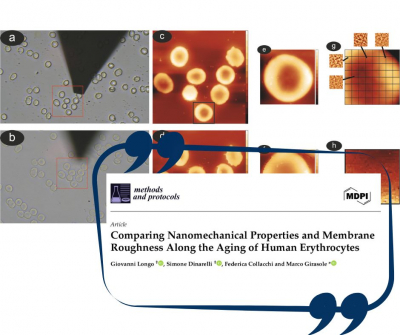
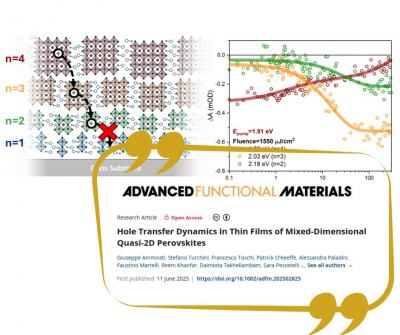
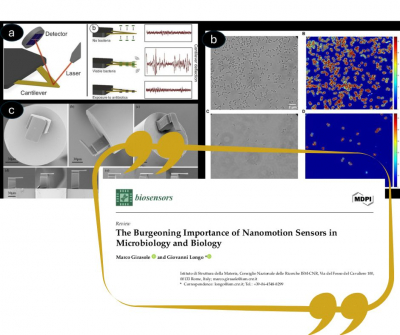

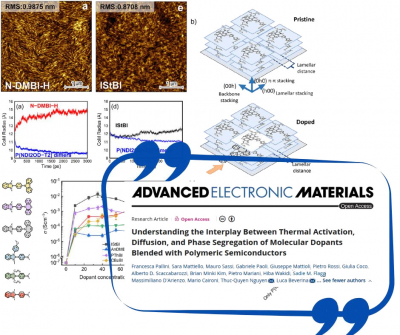

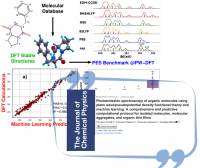
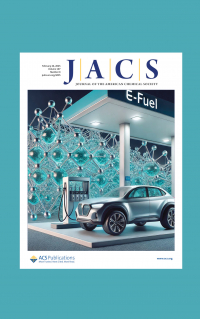
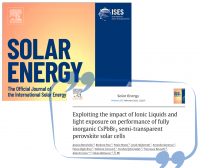





 English (UK)
English (UK)  Italiano (Italia)
Italiano (Italia)